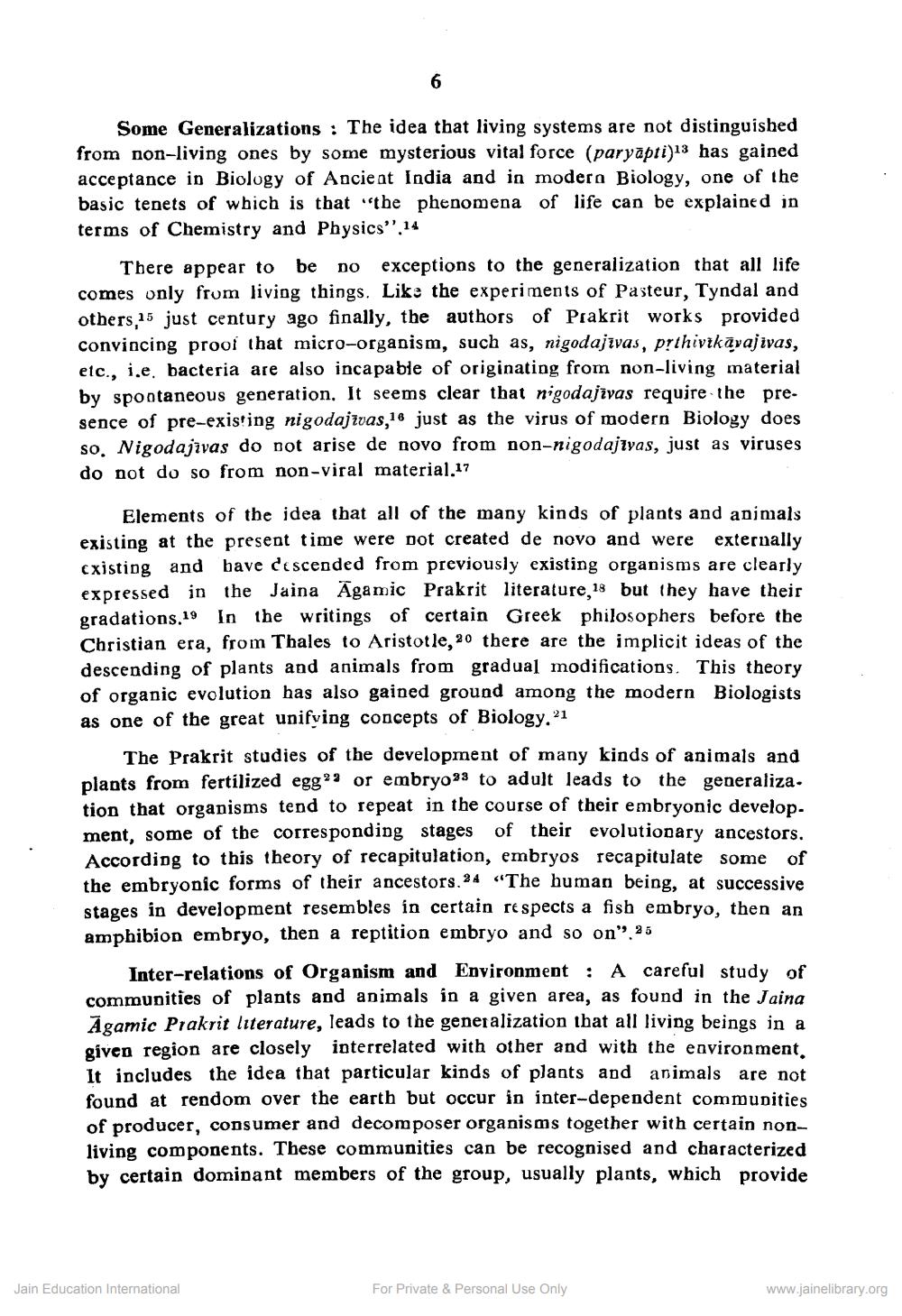________________
Some Generalizations : The idea that living systems are not distinguished from non-living ones by some mysterious vital force (paryāpti)13 has gained acceptance in Biology of Ancient India and in modern Biology, one of the basic tenets of which is that the phenomena of life can be explained in terms of Chemistry and Physics". 14
There appear to be no exceptions to the generalization that all life comes only from living things. Like the experiments of Pasteur, Tyndal and others,15 just century ago finally, the authors of Prakrit works provided convincing prooi that micro-organism, such as, nigodajīvas, prthivikavaj ivas, etc., i.e. bacteria are also incapable of originating from non-living material by spontaneous generation. It seems clear that nigodajīvas require the presence of pre-existing nigodajīvas, 1e just as the virus of modern Biology does so. Nigodajīvas do not arise de novo from non-nigodajivas, just as viruses do not do so from non-viral material.17
Elements of the idea that all of the many kinds of plants and animals existing at the present time were not created de novo and were externally cxisting and have descended from previously existing organisms are clearly expressed in the Jaina Agamic Prakrit literature, 18 but they have their gradations.19 In the writings of certain Greek philosophers before the Christian era, from Thales to Aristotle, 20 there are the implicit ideas of the descending of plants and animals from gradual modifications. This theory of organic evolution has also gained ground among the modern Biologists as one of the great unifying concepts of Biology, 21
The Prakrit studies of the development of many kinds of animals and plants from fertilized egg?? or embryo 33 to adult leads to the generaliza. tion that organisms tend to repeat in the course of their embryonic develop. ment, some of the corresponding stages of their evolutionary ancestors. According to this theory of recapitulation, embryos recapitulate some of the embryonic forms of their ancestors. 24 "The human being, at successive stages in development resembles in certain respects a fish embryo, then an amphibion embryo, then a reptition embryo and so on". 25
Inter-relations of Organism and Environment : A careful study of communities of plants and animals in a given area, as found in the Jaina Āgamic Prakrit literature, leads to the generalization that all living beings in a given region are closely interrelated with other and with the environment It includes the idea that particular kinds of plants and animals are not found at rendom over the earth but occur in inter-dependent communities of producer, consumer and decomposer organisms together with certain nonliving components. These communities can be recognised and characterized by certain dominant members of the group, usually plants, which provide
Jain Education International
For Private & Personal Use Only
www.jainelibrary.org




